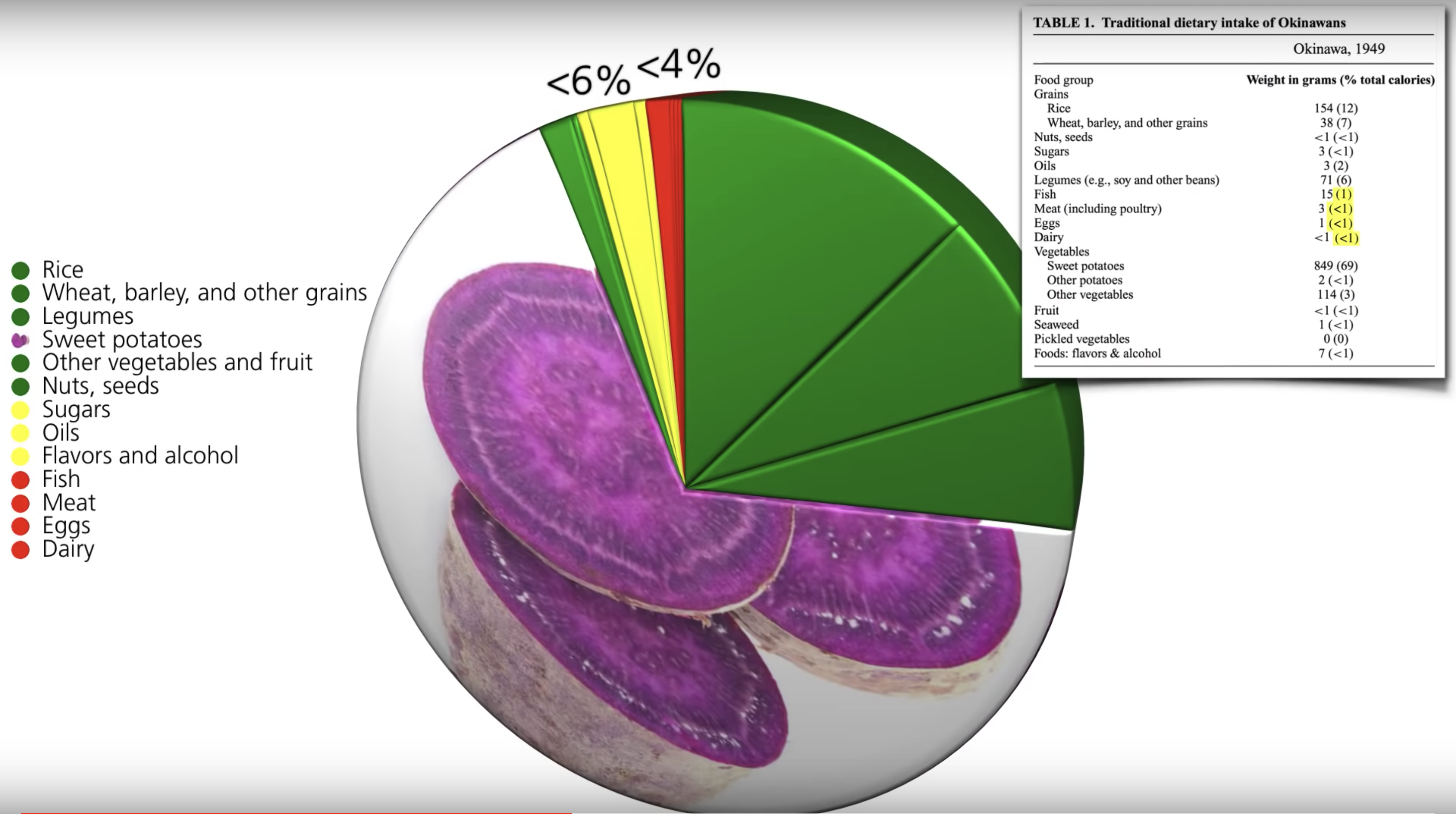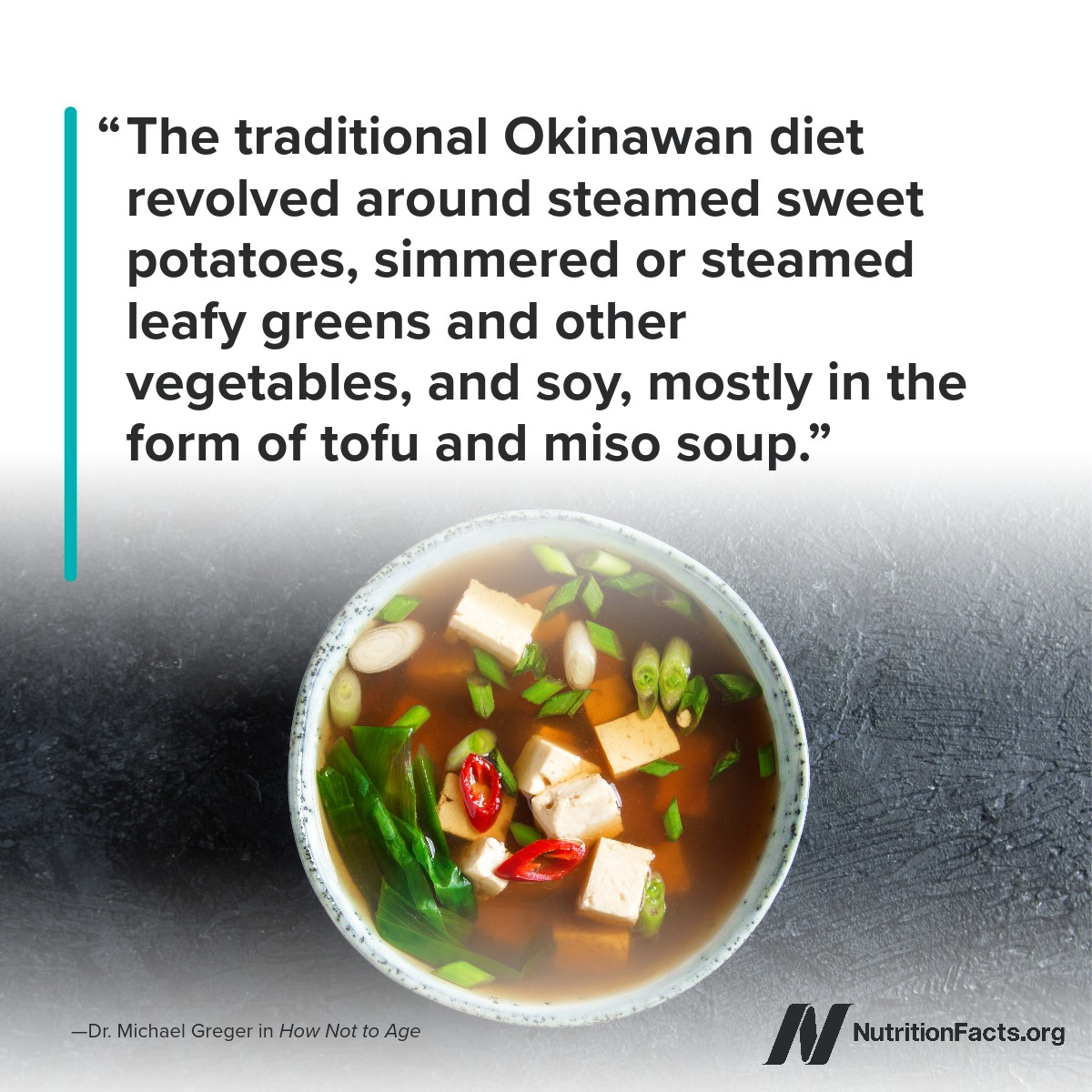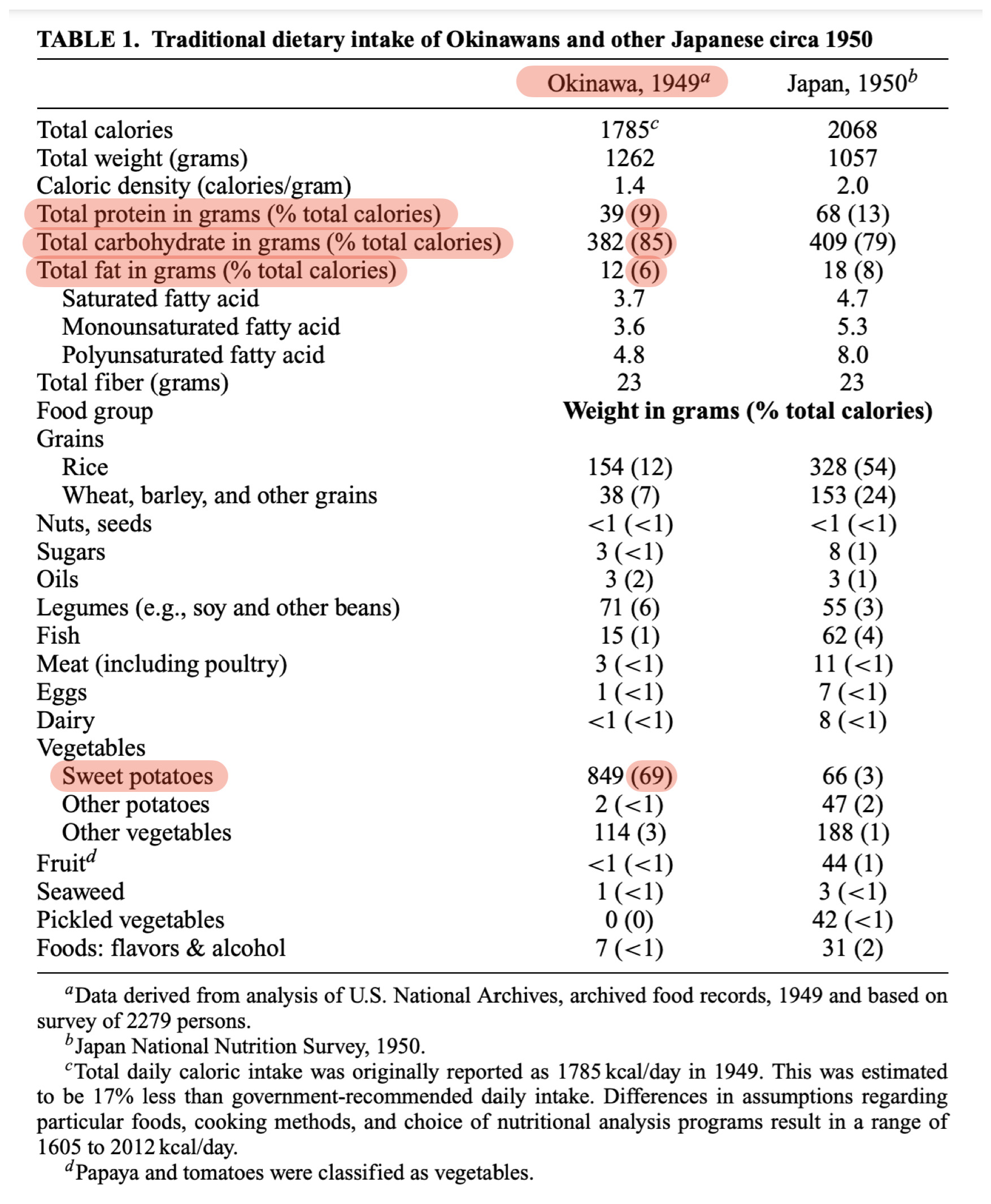(5 mins) Transcript. Dr Greger's summary: "What would happen if you centered your diet around vegetables, the most nutrient-dense food group?"

A screenshot from Dr Greger's video on Okinawan Diet showing that 96% of their diet was plant-based; only 1% of their diet was from fish, <1% from meat, <1% from eggs and <1% from dairy. Over 90% of their calories were 'whole plant foods'. A whopping 69% of their diet was centered around one specific vegetable: purple sweet potatoes!

Source: this FaceBook update by Dr Greger. He explains:
Excerpt from A plant-based diet and coronary artery disease: a mandate for effective therapy by Dr Esselstyn, J Geriatr Cardiol, 2017 May; 14(5): 317-320:
Excerpt from Huffington Post Interview with Dr Esselstyn (at Dr Esselstyn's website):
Excerpt from Plant-Based Nutrition from Dr Esselstyn's website:
Excerpt from An Independent Critique of Low-carb Diets: The Diet Wars Continue (2013):

Books: Mentioned by Dr Peter Rogers in the 7-min presentation below:
- (2005) The Okinawa Diet Plan (432 pages) by Bradley J Wilcox (MD), D Craig Wilcox (PhD) and Makoto Suzuki (MD).
- (2002) The Okinawa Program (496 pages) by Bradley J Wilcox (MD), D Craig Wilcox (PhD) and Makoto Suzuki (MD).
In a FaceBook comment, Dr Peter Rogers remarked,

 Instagram
Instagram YouTube
YouTube